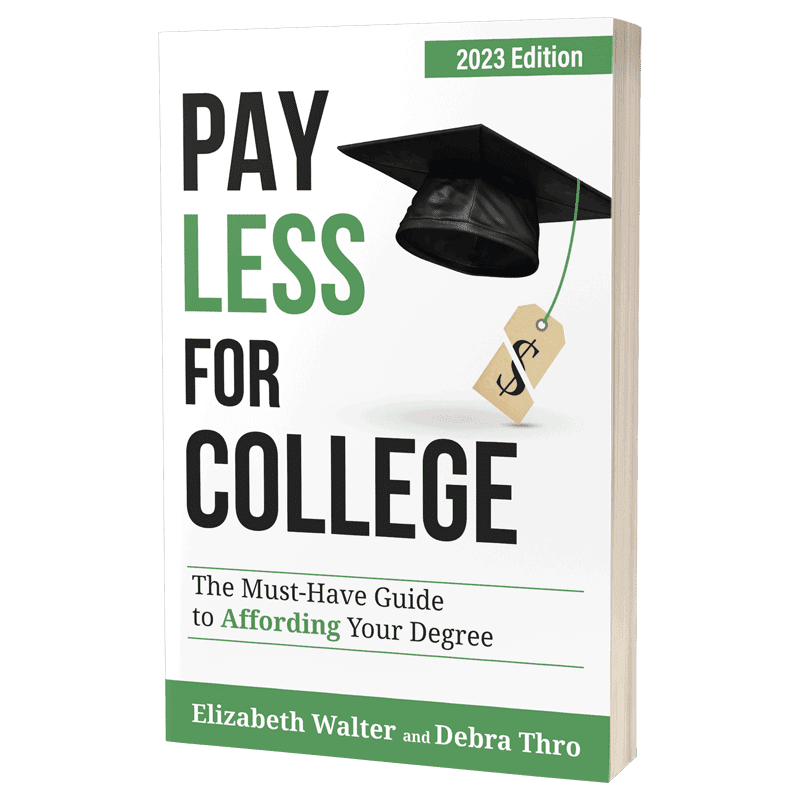Updated September 3, 2022
8 Essential Money Questions for Every College-Bound Family
There are many exciting things to talk about when you begin the college admissions process—what to study, which colleges to explore, and how to tackle college applications, plan college tours, prepare for interviews, and discover scholarships and other financial aid that might be available to you. But often completely left out of college discussions are critical questions about what college actually costs, who is responsible for paying those costs, and what student loan debt really means for the family. Most families only face these questions after acceptance letters and financial aid packages or tuition bills arrive. This is usually long after colleges have been chosen, toured, and applied to. Usually dismayed and sometimes horrified to discover what they are expected to pay each year for college, families scramble to figure out how to cover those costs. This often leads to financial decisions that are not in the family’s best interests. With skyrocketing college costs and a national college student loan debt crisis of $1.7 trillion, the college money conversation should happen before any other college planning. Parents and students need to establish their financial ground rules before applying to college. Having early, non-emotional, fact-based conversations about college costs can completely change expectations. This will help parents and students draw lines in the sand when it comes to taking on student debt or spending down family resources that could or should be used elsewhere. Here are 8 critical questions to ask in your college money discussion to help you arrive at a clear understanding of your family’s unique financial position on college costs: 1. What is the parents’ financial commitment to pay for college? Some parents are willing and able to save money each year toward their children’s college costs, either in an educations savings plan such as a 529 or in other savings or investment vehicles. Other parents are willing to pay as they go with cash or with other assets. But many parents have not been able to save for college and do not have available income or assets. And some parents, regardless of their financial situation, believe the student is responsible for paying all of his or her college costs.Because families differ in their commitments, resources, and values, the money discussion has to start with this question: What is the dollar amount that parents can or are willing to pay each year toward the Net Price of college?
2. What is each college of interest likely to cost YOU? This number is not simply the college’s COA (cost of attendance or ‘sticker price’). Most students pay less than the sticker price and every student has a different Net Price based on three factors: the financial aid policies of the college, the family’s financial situation, and how much the college wants the student to attend. Simply put, your Net Price = COA minus any grants and scholarships (money you do not have to pay back) you are awarded. Colleges with the most expensive sticker prices usually offer the most generous grants, which can make your Net Price at those schools competitive with cheaper schools. Don’t dismiss a college as too expensive until you’ve determined what you’re likely to pay at that school. Our article, Discover Your Likely Net Price, shows you how to get an accurate estimate of your likely Net Price at each college of interest. This knowledge will help you put together a list of colleges to apply to that you can financially handle. 3. Are parents willing to take on or co-sign education loans? When the family does not have enough in cash or assets to pay their total Net Price each year, they often turn to education loans. All students are eligible to borrow Direct Student Loans from the federal government at a fixed interest rate with favorable terms. Depending on the state in which they reside, some students also have the option of taking state education loans. However, the maximum a student can borrow in federal or state loans is capped each year and rarely covers the entire Net Price. To cover their remaining Net Price, families can turn to other education loans. Many banks, credit unions, and other lending institutions offer education loans in the student’s name, but almost always require a co-signer, usually a parent. The variable interest rate on these private student loans will depend on the co-signer’s credit score. But private student loans do not offer the same protections as federal loans and if a co-signer’s credit score is low, the loan’s variable interest rate can be very high. Parents can instead take out PLUS loans, federal loans in the parent’s name, at a fixed interest rate of 7.54% for the 2022-23 school year. Education loans are among the easiest loans to get. Parents without a negative credit history (such as a bankruptcy) can usually get a PLUS loan or co-sign a private student loan up to the full cost of attendance. And they can do this every year, regardless of mounting education debt. With these loan options, the full Net Price is attainable for most families. However, being able to cosign private loans or take out PLUS loans is one thing. It’s important discuss whether parents are willing to take on this responsibility. 4. Exactly how much money must be borrowed? This question should be answered for each college of interest. Take your likely Net Price at each school and subtract what parents are willing or able to pay from cash or savings plans each year. Then subtract any cash, savings, or assets the student can contribute each year. Multiply the remaining amount by four years to get the minimum you are likely to have to borrow to attend that school. 5. What will be the actual monthly payment on college loans after graduation? For each college considered, plug your estimated loan amounts into a college loan payment calculator to discover what the total monthly payment is likely to be. For example, if you borrow a total of $35,000 over 4 years at 6% interest, you will have to pay $390/month for 10 years. When the likely monthly loan payments to attend each college of interest are compared, decisions about which of these colleges to apply to may be much simpler. 6. Who pays down the loan once the student graduates? Before any borrowing or co-signing takes place, parents and students must be clear about who in the family is expected to pay down the college debt that has accumulated over 4 years, including PLUS loans in a parent’s name. There is no right or wrong answer to this question, but a family decision. Parents may agree to help with initial payments while their child is looking for a job after graduation or they may agree to pay a portion of the debt. But unless parents have agreed to pay all the debt, it should be made clear when they expect the student to take over payments and on what portion of the debt. And even with the best intentions, students and parents may be unable to pay the portion they agreed to. The consequences can be extreme. For example, the death of the student or parent co-signer on a private loan can trigger a default, making the loan due immediately. Or, if a student cannot find work to cover the payments they agreed to, parent co-signers will have to assume payments or risk ruining their own credit. These difficult scenarios should be discussed and planned for. 7. What about retirement or siblings’ college costs? Education loans are typically termed for 10-20 years. Before parents agree to pay all or any portion of these loans, they should evaluate how monthly loan payments may affect their own retirement plans—both when they can retire and with what lifestyle. Another consideration should be how younger siblings’ college choices may be impacted by parent financial support of an older child’s college costs. Existing college debt is not considered in the FAFSA’s determination of the family’s EFC each year. Nor is it usually considered by a college financial aid office in determining how much grant money to award. While parents are likely to be able to take additional PLUS loans or co-sign private education loans for younger siblings, the mounting debt may be more than they are willing or able to take on. Understanding how education loan payments may affect retirement and younger siblings’ college choices will help parents and students make decisions with the needs of all family members in mind. 8. Will the student graduate in four years? Although this may not sound like a money question to discuss before even applying to college, it’s extremely important to address. According to National Center for Education Statistics only 44% of students from 4-year colleges and universities graduate in 4-years (54% from private, non-profit colleges and universities, 36% from public universities, and 20% from for-profit colleges). Sometimes a student takes more than 4 years to graduate because of the school’s poor scheduling of classes. But other times it’s the student who’s at fault—transferring, changing majors, dropping classes, and not paying attention to program requirements. The cost of an extra year or two to get that 4-year degree can mean taking on much more debt, often 50% more. Students failing to graduate on time is a family problem if parents have to borrow more than they originally agreed to. It’s important for students to find colleges where they can thrive and from which they are likely graduate on time. And parents can make it clear that they will not continue to help financially unless the student is progressing toward a timely graduation. Although money discussions are never easy, especially with stressed-out high school juniors and seniors, tackling these 8 difficult money questions early on will save you time, money, and heartache in the college application process. Once you’ve established what college will cost, who is responsible for paying these costs, and how much debt the family can reasonably take on, it will become clear which colleges of interest align with the family’s resources, goals, and values.Learn More!
Paying for college shouldn’t be harder than going to college!



